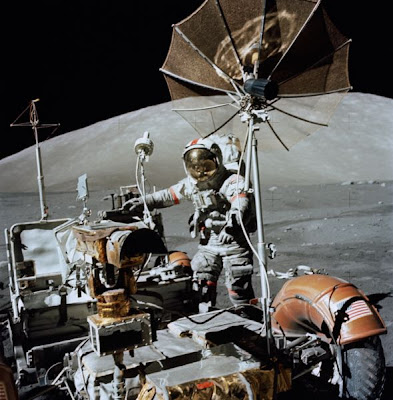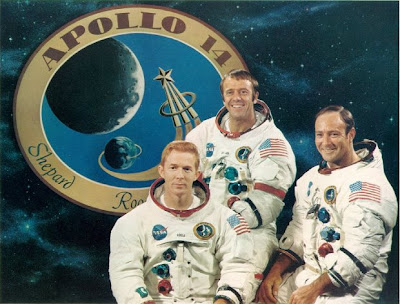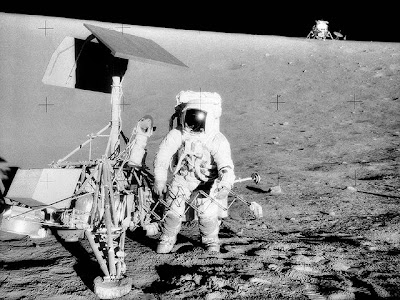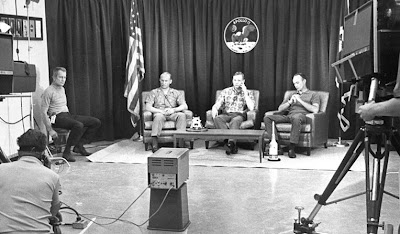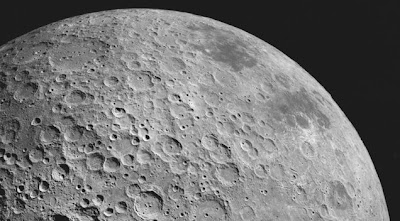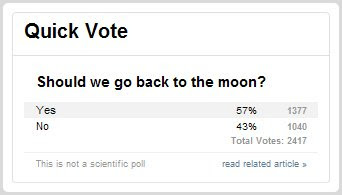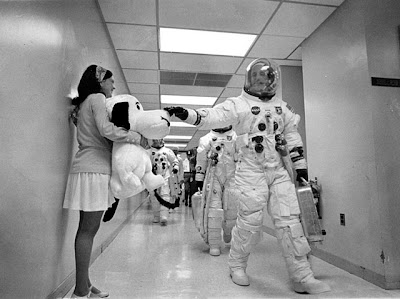1. Neil Armstrong left NASA in 1971, weary from constant requests for appearances. He agreed to appear in NASA documentaries and briefly on key anniversaries, but refrains from making speeches or granting interviews. When he is quoted, it’s usually to remind people that while his foot was the first on the moon, thousands of space program workers put him there. Armstrong will be 79 years old this August, and lives a quiet life in Indian Hill, a suburb of Cincinnati, OH.
2. Edwin "Buzz" Aldrin (age 79) retired from NASA in 1972 and returned to the Air Force, where he had a rocky career due to depression and alcohol problems, but recovered and went on to write two memoirs and one novel. Now one of the most accessible Apollo astronauts, Buzz makes public appearances all over the world and continues to promote space exploration.
3. DECEASED: Charles “Pete” Conrad left the space program in 1973 to become chief operating officer of American Television & Communications Corp. and later vice president of McDonnell-Douglas. He died from internal injuries in 1999 after a motorcycle accident in Ojai, CA.

4. Alan Bean (age 77), after walking on the moon in 1969, flew as commander of the Skylab II mission in 1973. He logged 1,671 hours in space before leaving NASA in 1981 to devote his life to painting in his Houston studio, re-creating his views of various Apollo space missions and even incorporating moon dust into his artworks.
5. DECEASED: Alan Shepard retired from both the Navy and NASA in 1974, and became president of the Mercury Seven Foundation in Houston, a non-profit organization which provides college science scholarships. He died of leukemia in 1998.
6. Edgar Mitchell (age 78) retired from both the Navy and NASA in 1972 and founded the Institute of Noetic Sciences in Palo Alto, CA. He has written two books about science and space, and also recently announced that NASA has secret knowledge of extra-terrestrial creatures.
7. David Scott (age 78) retired from the Navy in 1975 and from NASA in 1977; a few years later, he wrote “Two Sides of the Moon” with Russian Alexei Leonov, the first man to walk in space. He founded Scott Science & Technology near Manhattan Beach, CA.
8. DECEASED: James Irwin left NASA and the Air Force in 1972 to found the evangelical High Flight Foundation in Colorado Springs, CO. He served as their Chairman until he died of a heart attack in 1991.
9. John Young (age 79), after walking on the moon in 1972, also served as commander of the STS-1 and STS-9 missions on Space Shuttle Columbia. As he had also flown two Gemini and two Apollo missions, he became the first man to fly six missions across 3 programs. He retired from NASA in 2004, but still lives in Houston and makes personal appearances on behalf of the space program.

10. Charles Duke (73) was already a retired Air Force Reserve Brigadier General before he walked on the moon in 1972. He retired from NASA in 1975 and founded Duke Investments, Duke Enterprises and Duke Ministry for Christ, based in New Braunfels, TX.
11. Harrison “Jack” Schmitt (74) resigned from NASA in 1975 and worked as a consultant and writer/speaker. In the late 80s, he ran for the U.S. Senate representing New Mexico, and served 6 years in Congress. In the 90s, he was professor of engineering at the University of Wisconsin and also President of the Annapolis Center for Environmental Quality. He now lives in Albuquerque, NM.
12. Eugene Cernan (75) was the last man to walk on the moon in 1972, hence his 1999 book, “The Last Man On The Moon.” Catchy! He retired from NASA and the Navy in 1976 and formed the Cernan Corporation in Houston. He later served as Chairman of the Board for Johnson Engineering Corp., a NASA contractor which designs space crew stations and habitats.




